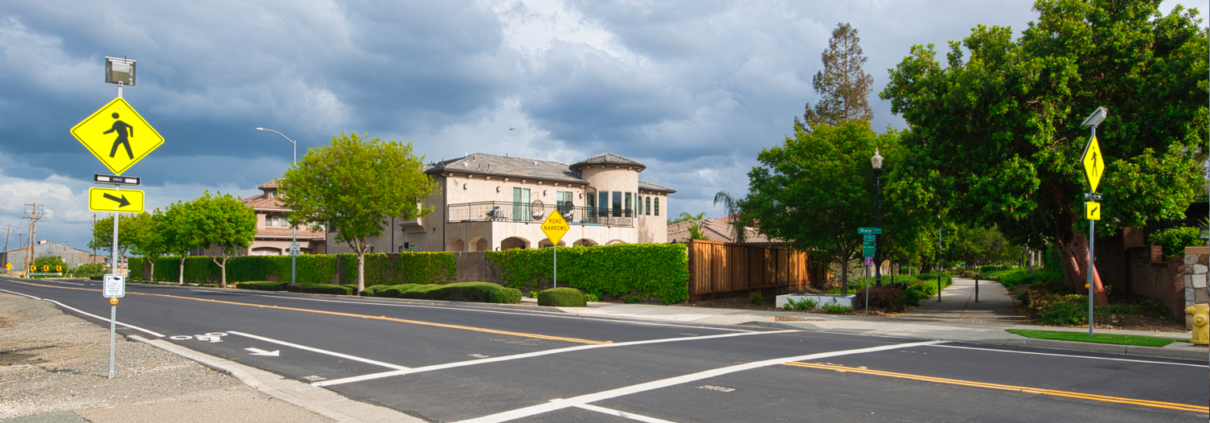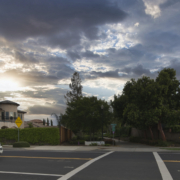Specifying RRFBs – The Essentials
This article provides the essential Performance Requirements to include when specifying Rectangular Rapid Flashing Beacons (RRFBs).
Here at Availed Technologies, we work with municipalities and engineering firms across North America everyday who are in the process of specifying RRFBs. We focus on the following three points: Array to Load Ratio, Autonomy, and Shading.
Before we get into the performance requirements it should be noted that the operational requirements of an RRFB are important to specify and these are clearly defined in the MUTCD 11th Edition, Chapter 4L. One other point that is discussed at the end of this article is the option to use standard sign posts for RRFBs.
#1: RRFBs and Array to Load Ratio
The Array to Load Ratio is the power coming into the system divided by the power consumed by the system. It is the single most important metric to pay attention to when specifying Solar RRFBs. The ALR Ratio must be greater than 1:1, and a minimum of 1.2:1 is recommended. Regardless of the size of the solar panel or size of the battery, a system with an ALR of less than one means there is a power deficit and the system will run out of power eventually.
For Solar RRFBs, the ALR must be calculated using worst case conditions to ensure reliable year-round operation. This is typically in December when the solar energy available is at a minimum. The Solar insolation for a particular location is available through a comprehensive database from NREL that is based on historical information which accounts for prevailing weather conditions and latitude.
Factoring in the site-specific solar data, the daily power generated by the RRFB is determined by how the device converts the available solar energy into electrical energy that runs the system and is stored in the battery. This calculation is manufacturer-specific and varies significantly from one brand to another.
Power Consumed By RRFBs
The power consumed by the RRFB is also very manufacturer-specific and will vary even more from brand to brand than the power generation side of the equation. Power is consumed by the RRFB lightbars when they flash and also by the wireless connection between the systems which manages the activation of all systems at the crosswalk, so that when any one push button is pressed all the RRFBs start flashing immediately and stop flashing at the same time.
The wireless connection must always be ‘on’ and therefore this function is a significant portion of the power consumed. Advances in both LED and wireless technology have enabled dramatic improvements in power efficiency, the result of which is the ability to achieve a high ALR with a compact and lightweight system.
#2: RRFBs and Autonomy
The autonomy of an RRFB is defined as the number of days it can operate without any charging. It is a function of the daily power consumption and the battery capacity of the system. In an actual installation autonomy is hypothetical because the system will charge in the day even during cloudy conditions. Cold temperatures will decrease the battery capacity and this should be factored into an autonomy calculation.
Autonomy should never be the sole metric used in specifying a solar RRFB because it does not take into account the ‘power in’ of the system. Nevertheless, it is an important consideration as energy storage is essential for the system to function during nighttime and low light conditions. An autonomy of 5-10 days is recommended.
#3: RRFBs and Shading
Shading from trees and buildings is site specific and is often overlooked. At Availed Technologies, we can review the location with Google street view and we will incorporate this information when producing the solar performance report.
Key takeaways:
- Always use ALR and Autonomy when specifying RRFBs
- Use a solar performance report that factors in site specific shading to ensure system reliability
- Never specify the solar panel size or battery capacity alone as these metrics do not factor in the power generation and power consumption of the system.
For further information on ALR, Autonomy, and RRFB efficiency see the article The Power of Solar RRFB Systems.
A final consideration when specifying RRFBs is the pole type. A positive benefit of an efficient system is that the product is compact and lightweight which makes it feasible to use standard sign posts. Using 2” Telespar square perforated tubing or standard 2” round sign posts will significantly reduce the installed cost of the system and will simplify the installation process. Standard sign posts can also be helpful for placement of RRFBs in locations where space is limited.
One feature worth mentioning regarding the Availed AV-400 RRFB is that it comes with a Universal mounting system that is compatible with all pole types, from the traditional 4 ½” diameter pedestal poles to 2” square and round posts, and everything in between.
Have any further questions about the essentials of RRFBs? Reach out to our team today!











